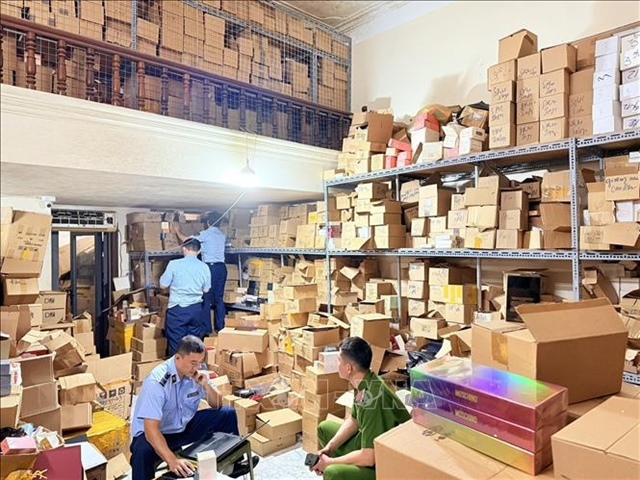Ports key to nation's future
Ports key to nation's future
Viet Nam needs a long-term port system vision in order to maximise its coastline advantage and reach the government target of sea commerce accounting for more than half of GDP by 2020.

But as the economy struggles, newly-built ports are incurring major losses, partly due to weak management on the development side, experts told a recent conference held to assess the development, construction and management of Vietnamese seaports.
Do Hong Thai, deputy head of Viet Nam Maritime Administration, said the country's seaport development has made positive contributions to other economic sectors and economic integration efforts.
According to official statistics, the country has 30 operating seaports with 166 wharfs and 350 quays totalling 45,000m in length with the capacity to handle 350-370 million tonnes of goods per year.
However, insufficient investment and inefficent use of ports in the north have made those in Hai Phong City overloaded. Meanwhile, the Cai Mep-Thi Vai port complex in Ho Chi Minh City struggles to find reliable sources of goods.
In the central area, besides Quy Nhon, most seaports are operating under capacity and some cannot cater for high-capacity vessels.
Ngo Minh Tuan, deputy general director of Tan Cang Sai Gon, said most of the container ports in the Cai Mep-Thi Vai area incurred losses ranging from US$6-7 million to $20-30 million in 2011 and the first few months of 2012.
Even in areas where modern ports have been built, transport infrastructure is not up to scratch. Most of the major ports are located near residential areas, making it difficult to create linking roads with the ports.
Thai admitted the country is suffering from a weak infrastructure system that cannot meet the growing demand of logistics, due to a lack of a long-term development vision in land allocation and licence grants.
There has also been unhealthy competition among investors and those who exploit the ports.
Nguyen Hong Truong, deputy minister of Ministry of Transport, said weaknesses in developing both the hard and soft infrastructures were major hindrances.
Transport Deputy Minister Nguyen Van Cong said the ministry would complete an assessment of the seaport system, as well as a review of unimplemented construction projects.
The ministry is also working with localities to examine and inspect the implementation of projects accordingly to approved zoning plans and could withdraw investment licences for projects that have not met deadlines.
According to Cong, the Ministry would also ask the Government for the allocation of resources to invest on major port projects of regional stature that have a breakthrough effect. Other ports can be built using the mobilisation of private resources.
The Ministry would also work to assess and revise a legal framework that would make it easier for businesses to operate, increase the level of connectivity between transportation links and ports, as well as making efforts to attract more goods through a better-coordinated distributing system.
vietnamnews






















